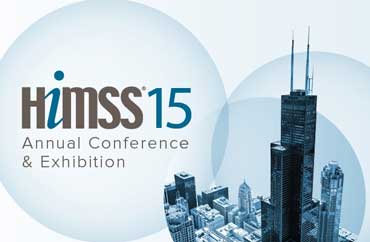
Each of these topics are deserving of far more detail, which will likely end-up in future reports or Domain Monitors over the next few months. In honor of Dave Letterman, however, I give my own Top 10 list (working backwards in order of importance):
10. Confusion on what specific term to even use for a ‘care plan’: I had eleven separate names for care plans notated in my notes including ‘patient-centric care plan,’ ‘longitudinal patient care plan,’ ‘patient-centered care plan,’ etc. There is no agreement on terminology.
9. Increasing emphasis on mobile accessibility: At HIMSS and in follow-up conversations been surprised by just how critical mobile accessibility is becoming for care team members and patients alike. Vendors that don’t possess a robust mobile capability here are going to find it difficult to be competitive by next year. Note to self: More research is needed to determine the extent of mobile functionality required.
8. Wide diversity in approaches to the ‘longitudinal patient record’: Being able to find information in a timely and efficient in a patient’s longitudinal patient record in a care management application is critical. There is a wide diversity though in vendor approaches including how much information is displayed and how to navigate through it, what types of information are displayed, etc.
7. Tying it back to patient’s risk score: Several issues came up but the main ones focused on how the completion of tasks/interventions in the care plan modify the patient’s individual risk score. There is also the issue of how to prioritize tasks/interventions in terms of their largest potential impact patient risk, especially for patients enrolled in multiple clinical programs.
6. Struggle to find the ‘just right’ level of messaging: Care management vendors are continuing to struggle with several issues related to messaging and alerting including getting appropriate info back into the PCP’s EHR, ensuring HIPAA-compliant messaging on care team member BYODs, etc.
5. Cerner and Epic are coming but they aren’t there . . . yet: 2015 will a year where these two plan to release modular solutions (‘HealtheCare’ by Cerner) or add additional functionality (Epic adding and enhancing existing care coordination functionality in Healthy Planet) while trying to add about more robust care coordination functionality. These two behemoths of HIT as well as their EHR brethren as a whole are still well behind best of breed vendors.
4. Still a large focus on readmissions and the conditions covered by them for care transition programs: Significant focus remains for the original three conditions (congestive heart failure, acute myocardial infarction, and pneumonia) covered by Medicare’s readmission program. But HCOs are also seeking to focus care transition programs that address other conditions including diabetes, stroke, and the two additional conditions being covered by the Medicare readmission program (chronic lung programs and elective hip & knee replacements).
3. Mixed reaction to the CCM code: Mixed reaction from vendors and providers alike on the true value to providers of CMS’s new chronic care management (CCM) code. Do HCOs spend time and energy on it or instead remain focused on larger VBR-related revenue issues? The one thing that may tip the scales though is if private payers follow suit this year and enact a similar payment code for their commercial contracts.
2. Large degree of manual processing yet: Besides some of the automated outreach efforts to patients, there remains a high degree of manually-driven workflows in current vendor offerings that can limit the number of patients and tasks a nurse care manager can complete on a daily basis. Without a higher degree of automation, the ROI of these chronic disease management programs is likely to remain limited given the considerable startup and ongoing labor-related costs.
1. Still largely lip service yet regarding the patient and their caregivers: Saw a bit more accessibility to the actual care plan for patients than I thought I would see before I went to HIMSS, especially among startups or smaller vendors. However, there remains significant limitations in current care management solutions for capturing the patient’s perspective, priorities and values within a care plan to make it truly patient-centric. Maybe that is why there is so much confusion in the first point, Number 10, as to how one actually names a care plan…
I am hoping that I will be able to provide a bit more insight into these issues and more through the Care Management Market Trends Report, which will be released later this summer.




It looks like “care plan” will follow “patient engagement” for the broad number of names, activities and objectives. Anything from discharge instructions, medication list, health program, or after visit summary could be part of a care plan. Yikes!
It’s just going to become a bigger and bigger topic area as the baby boomers move through. They (me) will likely drive tremendous change and innovation in this area. First to market with a good understanding of what patients and consumers need will do well.